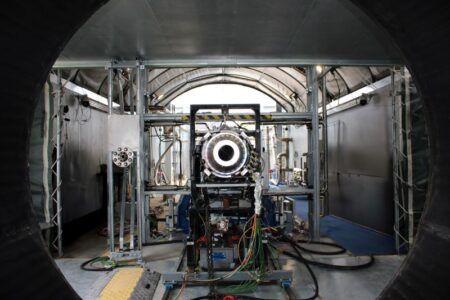The Aeroscraft Corporation (Aeros) recently revealed another milestone completed in the development of the world’s first Vertical Takeoff and Landing (VTOL) capable heavy-lift cargo airship, the Aeroscraft, featuring independence from external ballast. Following the engineering scale down prototype ‘Dragon Dream’ phase of the program, the team at Aeros is now entering the design freeze phase for the ML866 (66-ton) Aeroscraft cargo airship.
Aeros is currently developing main component and test articles for the patented buoyancy management system known as COSH, or control-of-static-heaviness, as well as structural components for the operational Aeroscraft with 66-ton payload. The advanced aircraft now taking shape is unique in terms of its capability, size, cargo handling and propulsion, featuring infrastructure independence with vertical takeoff and landing (VTOL) capability at max payload. COSH is Aeros’ proprietary and patented internal buoyancy management technology, which was successfully demonstrated in 2013 as part of DoD ‘Project Pelican’ with the technology demonstration vehicle measuring approximately 1:2 scale, known as ‘Dragon Dream.’
Aeros is planning to complete the configuration design freeze for the 66- ton payload capable Aeroscraft by end of 2015 as part of fleet development efforts now underway to satisfy global demand for the vehicle’s new logistics capabilities. “We are excited to reveal production is underway on the 555-ft long ML866, and committed to achieving FAA operational certification for the first deployable Aeroscraft in approximately five years,” explains Igor Pasternak, CEO of Aeroscraft Corporation.
The Aeroscraft is a new heavy-lift, variable-buoyancy cargo airship featuring an onboard buoyancy management system, rigid structure, vertical takeoff and landing performance, and operational abilities at low speed, in hover, and from unprepared surfaces. Aeros’ unique and patented COSH technology breakthrough permits airships to efficiently address global cargo/logistics applications for the first time. This new capability will dramatically decrease the time and cost for delivering large ‘project’ and container cargo around the world, especially to austere areas with no prepositioned infrastructure.
September 24, 2015




